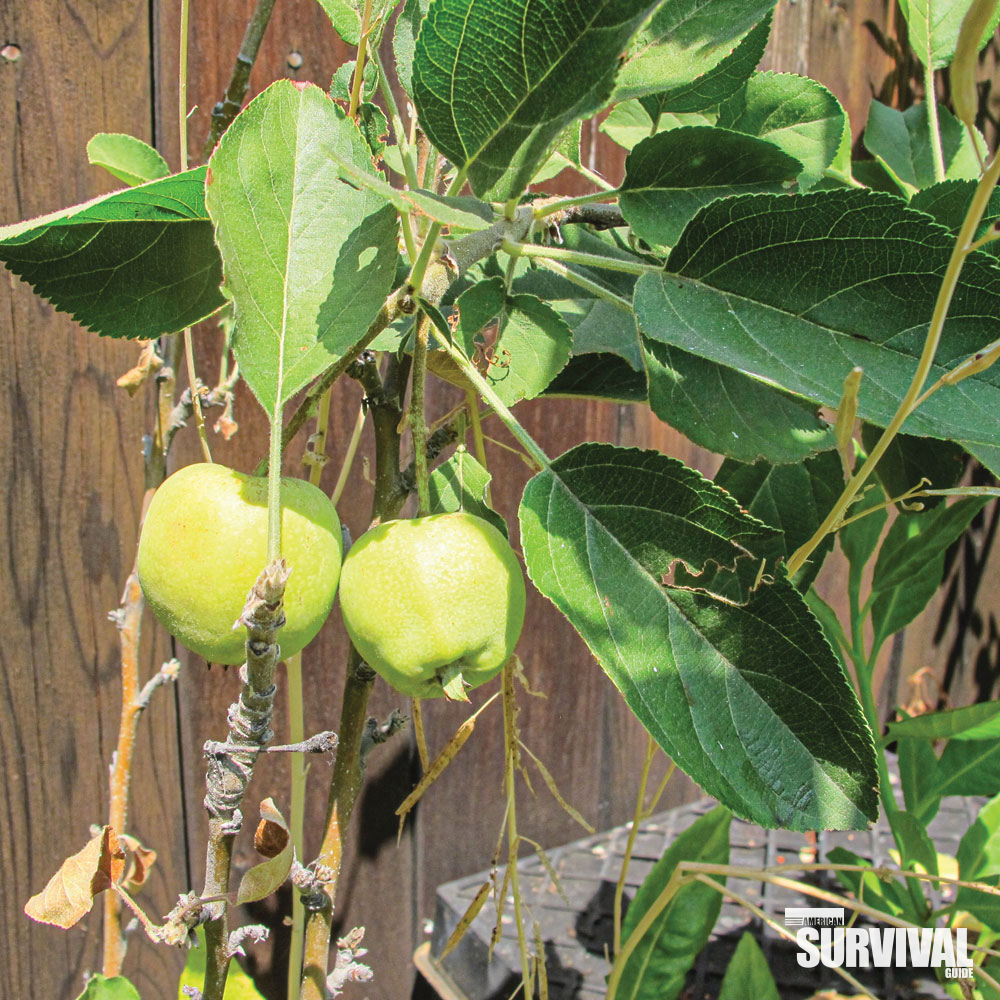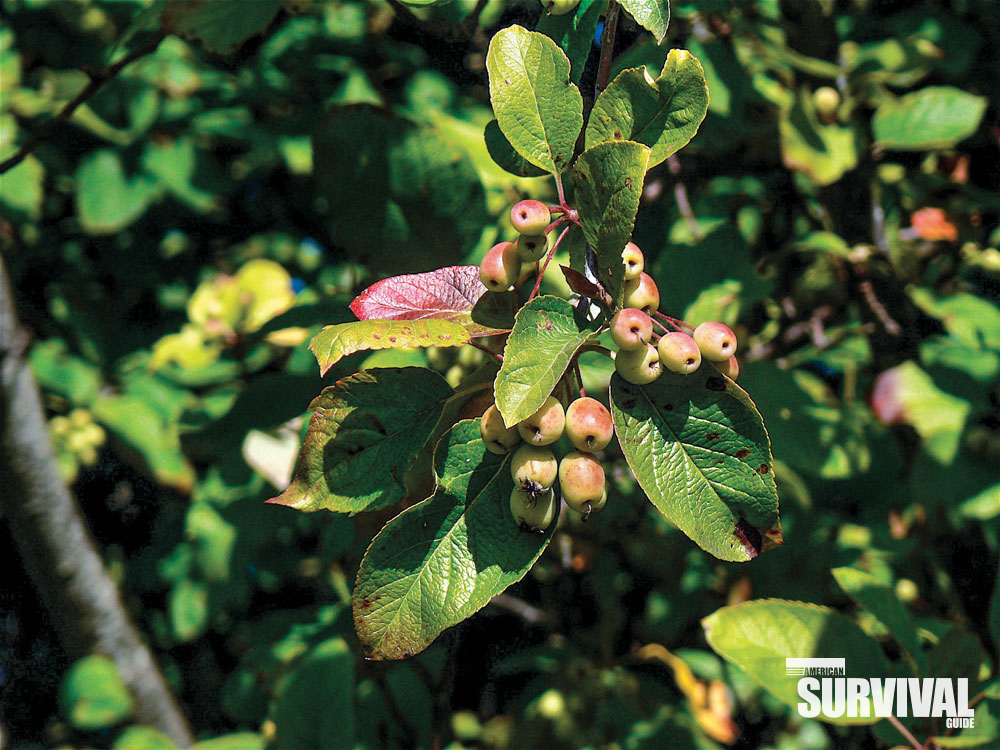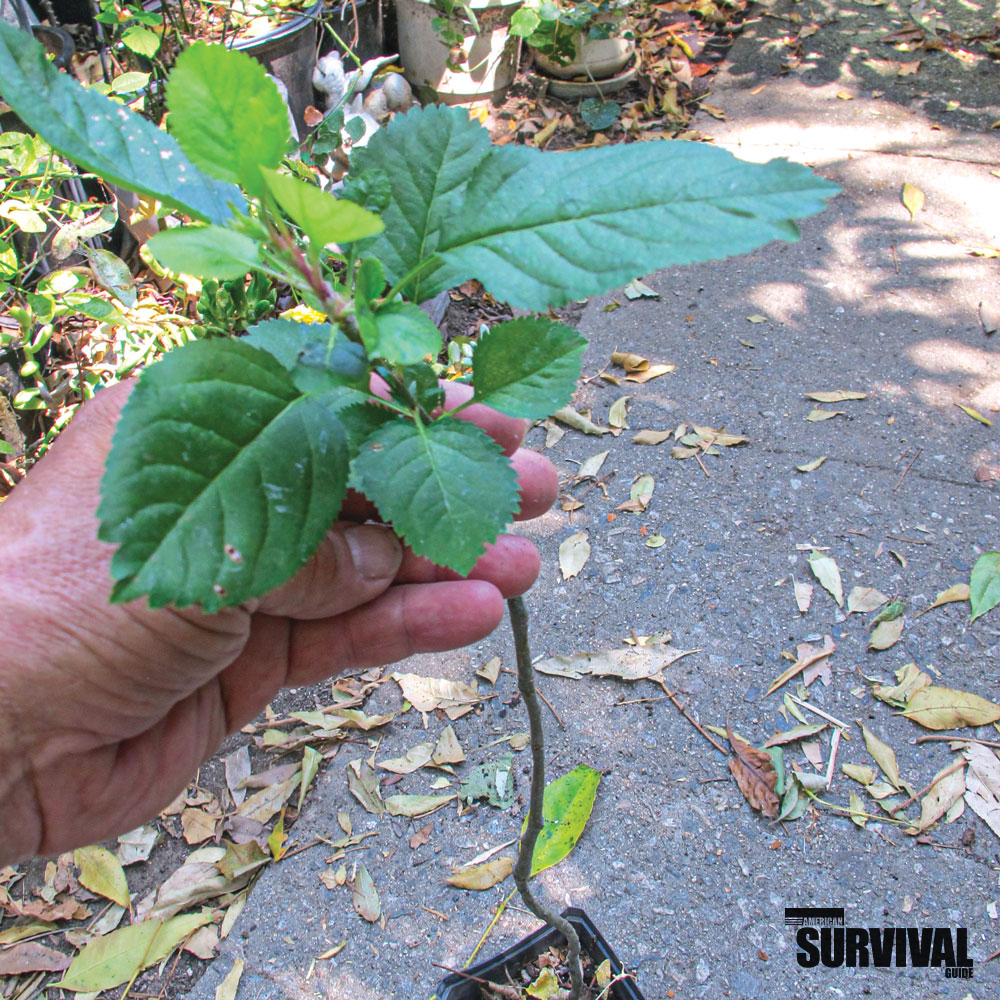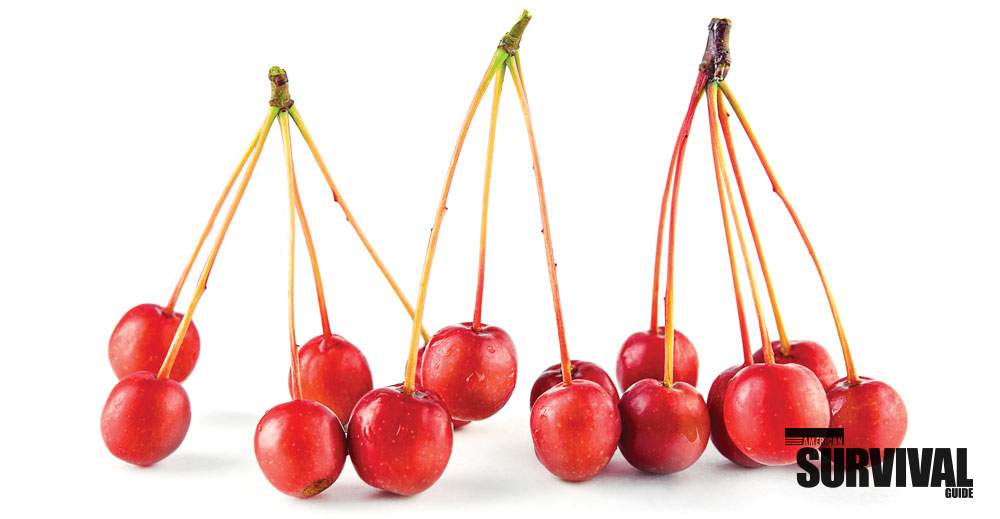Wild Apples
Popular and plentiful across the country and great for cooking and baking
Name: Wild Apples
Description
Worldwide, there are about 25 species of the Malus genus, which includes all our domestic apples. According to botanists, all our apples come from the wild crab apple (Malus pumila) and two distinct forms—M. sylvestris (from northern Europe) and M. mitis (from southern and eastern Europe). The apple has been popular as far back in time as we have records and has been domesticated and cloned going back at least as far as ancient Roman times. According to the USDA, there are around 7,000 varieties of that domestic apple.
If you’ve ever seen a domestic apple tree in an orchard or backyard, you know what the tree looks like. In the wild, these will be small trees, often in thickets. You’ll look at the leaves and the fruit, and you’ll say to yourself, “Boy, that sure looks like an apple.” It would be a wild, small crab apple, and it could be any of the many varieties of apples that have gone feral.

Each leaf is lanceolate to ovate-lanceolate, 1.5 to 4 inches long, pointed, serrated, occasionally with a lobe on one or both margins. It’s deep green above, paler beneath.
The floral inflorescence (group or cluster of flowers) typically has five to 12 flowers and is flat topped. There are five white petals, 20 stamens (shorter than the petals) and usually three styles. The fruits are fleshy, round to obovoid and about 10 to 16 millimeters long. The color can range from yellow to purplish red.
Where It’s Found
It can be found in Alaska, south to California and from the west coast to the east coast. It’s found in moist woods, swamps and open canyons from sea level to moderate elevations in the mountains. Apples do best where there’s a winter frost.
Uses
Remember, if you know what an apple looks like, you’ll recognize wild apples or crab apples as well. Probably everyone who has seen one for the first time has picked one, chewed on it … and spit it out because it was too sour. These aren’t great to eat raw as you’d eat a regular domestic apple. Even so, they’re still a great find.
Properly prepared, these can be quite good. I’ve cooked them, run them through a sieve to get rid of the seeds and skin and made a great crab apple sauce. You can sweeten this sauce with a bit of honey.

These fruits can be dried as a snack for later or mashed and added to other baked goods. They can be cooked, mashed, strained and used as the basis for an apple drink. The cooking mellows the flavor, but you still might want to add some honey (and this goes particularly well with a cinnamon stick).
You can do almost anything with wild apples that you’d do with cultivated apples, such as cooking and mashing up a batch, spreading it thin in a pan and drying it for fruit leather. If you’re good in the kitchen, you can cook up a batch of the small crab apples to make jams or jellies.
The fruits that might remain on the trees will lose a bit of their tartness and will even sweeten up a bit if you harvest them in winter.
You might be surprised how many gone-feral apple trees you can find that still produce fruit. Some of the best apples I’ve ever eaten were picked in orchards that had been abandoned at least a decade earlier. Yet, they still consistently produced quality fruit.
Processing
Processing feral or wild apples is the same as for commercial apples: Use standard kitchen appliances to make juice, butter, cider, sauces and other food items. Before you begin, quarter the apples and remove the seeds. However, because the skin is so nutritious, you might want to leave it on.
When to Harvest/Availability
Some fruits begin to ripen in late summer. Generally, the best time to collect the ripened fruits is autumn.
Medicine/Nutrition
A medium apple, with a diameter of about 3 inches, equals 1.5 cups of fruit. (Two cups of fruit daily are recommended as part of a 2,000-calorie diet.)
One medium apple (about 6.4 ounces) offers the following nutrients: 95 calories, 25 grams of carbohydrates, 4 grams of fiber, 14 percent of the RDI of vitamin C, 6 percent of the RDI of potassium and 5 percent of the RDI of vitamin K. It also contains lesser amounts of manganese, copper and vitamins A, E, B1, B2 and B6. To get the greatest nutritional benefit out of apples, leave the skin on. It contains half the fiber and many of the polyphenols.
Apples have been linked to a lower heart disease risk. One reason might be that apples contain soluble fiber—the kind that can help lower your blood cholesterol levels. They also contain polyphenols, which have antioxidant effects. Many of these are concentrated in the peel. One of these polyphenols is the flavonoid “epicatechin,” which might lower blood pressure.
Advice for Growing
It’s very easy to plant an apple seed and get a tree to grow. However, your fruit isn’t likely to be the same as the parent fruit from which you got the seed. So, yes, growing from a seed is easy, but you don’t know what sort of fruit you’ll get until the tree fruits after a few years.
However, you can also make a vegetative clone with an apple branch from a tree whose fruit you like. Just take a cutting, place it in a rooting medium and keep it moist. I often soak the cuttings in water for a few days before planting. You can also experiment with rooting hormones, because they’re supposed to increase your chances of success.
Cautions
The seeds of any apple are toxic because they contain a small amount of a cyanide compound. Even so, you’d have to eat a lot of apples to cause sickness; and, if you don’t chew the seeds, they’ll just pass through your body. An adult could die if they chewed up about half a cup of pure seed at one sitting. Fortunately, cooking and drying help break down this chemical, significantly reducing any danger.
It’s possible to get diarrhea by eating a lot of raw apples. “A lot” can vary from person to person, so if you enjoy eating crab apples raw, go slowly at first and monitor what happens to your body.

History
Was “Johnny Appleseed” a real person? Yes! John Chapman was born in 1774 in Massachusetts and traveled throughout the Ohio Valley area, where he established nurseries as he traveled and made some money from his plantings. He planted seeds and sold the young trees to farmers along the way.
Chapman trained under an orchardist (by the name of Crawford) to learn the art of raising trees, and this gave him the knowledge and inspiration to do so on his own. Contrary to folklore, he didn’t simply wander in a happy-go-lucky manner; rather, he used the money from his apple trees to support his desire to travel and preach the Swedenborgian religion. He died in 1845.
Recipes
As stated above, you can substitute wild apples in virtually any recipe you have for domesticated apples. Some adjustments might be required for taste.
Wild Applesauce
Core a dozen wild apples. Cook them until tender and then blend them coarsely. Pour into jars and chill before eating. Sweeten with wild elderberries or strawberries.
About ASG’s Plant Advisor
Christopher Nyerges has been teaching ethnobotany since 1974. He’s the author of Guide to Wild Foods and Useful Plants, Foraging Wild Edible Plants of North America and other books on the uses of wild plants. He can be reached at SchoolofSelf-Reliance.com.


